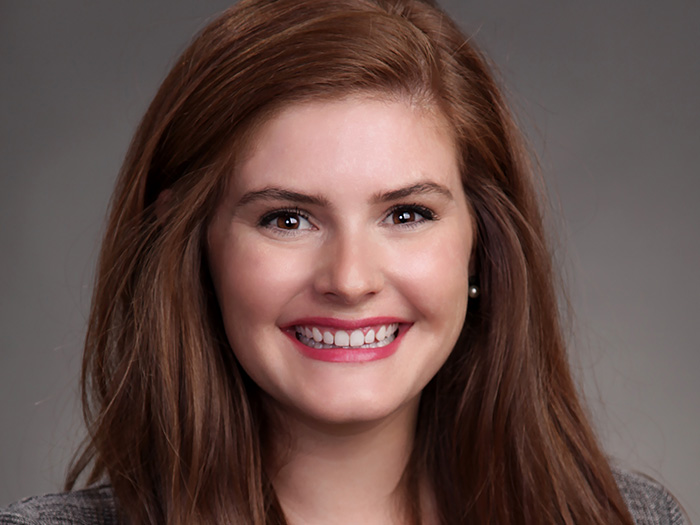Here’s How Companies Are Using Captives to Offset Insurance Price Increases

Insurers took a hammering with insured losses from the hurricanes that devastated large parts of the U.S. East Coast and the wildfires that swept through California in late 2017 and 2018, among the costliest on record.
The $219 billion total global insured losses, mainly from Hurricanes Harvey, Irma and Maria, were the highest for a two-year period, according to Swiss Re, but that’s only the tip of the iceberg, with claims still flooding in.
As a result, many carriers have been drastically pulling back on their property books and limits, hiking rates significantly, sometimes by as much as 40%, or exiting the space altogether.
Added to that, they have been hit with a new wave of outsized jury awards in favor of plaintiffs, prompting many to reallocate their general liability capital for use against further claims.
“Say you have a carrier that writes a global program but there are a couple of countries it doesn’t feel comfortable writing. The captive can then step in and assume say the first $5 million of each claim” — Michael Serricchio, managing director, Marsh Captive Solutions
“The focus on front-line underwriting results has led to a capacity restriction as a method to try and avoid catastrophic exposure,” said Nate Reznicek, director of operations at CIC Services.
“Underwriters are now having to take a hard look at the lowest performing books and make decisions to raise rates or to drop from the market completely.”
With such an increasingly limited supply of traditional insurance, companies have been turning to captives to fill the resulting gaps in their insurance program towers.
Previously, captives were used to step in where primary cover wasn’t available or it was prohibitively expensive for a traditional risk such as property or casualty. But now, because of the capacity shortage, they are being utilized much more widely in each part of the tower from primary to higher excess layers, and even deductibles.
Among the risks for which they are increasingly being used are general and management liability, workers’ compensation and medical professional liability.
Increasing Demand
This greater take-up of captives is driven by an increasing awareness of how they work among middle market companies and the wider availability of risk models to help them determine their risk appetite.
In many cases, firms may already have a captive but only now, prompted by a hardening market, have they been seeking to make the best use of it.
Jason Flaxbeard, executive managing director at Beecher Carlson, said the insurance market reached a tipping point where companies are increasingly prepared to take on much more of their own risk across the spectrum through a captive.
This has been evidenced by the recent flurry of calls he has received from clients wanting to fully utilize their existing captives or form new ones.
“One client was presented with a 30% hike in their property program by their carrier at renewal,” he said.
“But after deciding to take a much broader look at their risk profile and appetite, they ran the analytics and realized that it made sense to put all of their risks together into one bucket and insure them through their captive with much wider coverage limits.”
Across the Tower
Not only are captives being used for multiple lines, they are also being applied across the insurance tower to provide greater capacity. Plugging the shortfalls where traditional insurance isn’t available, they can be used to ensure that companies are fully covered at every level of their program.
Michael Serricchio, managing director at Marsh Captive Solutions, said that in this hardening market, captives are increasingly being used throughout the insurance tower, whether it’s within high excess layers or pockets of five or 10% capacity, and that use is only going to continue.
They can also be used, for example, to fill in gaps in a multi-layered global program, he added.
“Say you have a carrier that writes a global program but there are a couple of countries it doesn’t feel comfortable writing. The captive can then step in and assume say the first $5 million of each claim,” he said.
“It can also be used in a traditional property program, where it can take on the risks a carrier doesn’t want to, backed by reinsurance.”
Roger Ladda, senior vice president and alternative risk and captive practice leader at Conner Strong & Buckelew, said that as companies build up bigger capital bases, they increasingly use their captives to fund higher retentions for lines such as property, general liability and workers’ compensation.
They have also been used to provide carve-out and enterprise risk type coverage, wind deductible buy-backs and to enable them to take quota share in the excess layers, he said.
“An example of this is in the health care arena, where many hospital and medical groups and care centers tend to assume high deductibles or retentions for their medical professional liability insurance,” Ladda said.
“Many companies that have set up a single-parent captive will fund these retentions through their captive or take quota share risk from the traditional markets excess of these retentions.
“In addition, carve-out coverage in a captive is also commonplace for such things as mold, sexual molestation and various general liability exposures. That’s especially true in, for example, New York City, specifically for contractors. Insureds with captives also find themselves with pressures from other segments of the insurance market, such as management liability, where retention is increasing as well as the cost of risk transfer above retention levels,” said Ladda.
John English, CEO of captive and insurance management at Aon, said that some firms facing significant price increases, retentions and restrictive limits resulting from large natural catastrophe exposures have moved these risks into a protected cell company.
Another trend he is seeing is that rather than primary retentions being set based on individual risk lines, a uniform, higher retention is being taken by captives across multiple lines with aggregate stop-loss cover purchased in the reinsurance market.
“The key benefits of deploying captives in these ways would be to combat price increases that were probably unbudgeted, as a means of maintaining program control and to facilitate access to reinsurance market capacity that would otherwise be unavailable to them,” he said.
“Flexibility is also a factor. Obviously, market conditions change constantly. So to the degree that they stabilize and provide competition for profitable business returns, the captive participation can be scaled back or tailored at the next renewal.”
Same Strategy, Different Time
The strategy of using captives at every layer of the tower, however, is nothing new, according to Jim Swanke, senior director at Willis Towers Watson.
Swanke said captive owners adopted a similar tactic back in the 1980s. After such a prolonged soft market, he said many companies were merely taking the opportunity to do the same.
“It’s really the perfect storm for the insurance industry; rates have been cut year after year, loss experience has been getting worse across most lines and we are still at historical low investment return levels,” he said.
“As a result, carriers are cutting back on the limits and capacity they are willing to offer insureds at the same time as raising their rates.
“Companies then have the dilemma of whether to take whatever capacity is available and collapse their tower, or leave the limits the same but let the captive fill in the gaps.
“Based on what they hear from the market, they therefore need to develop a strategy which will often involve setting up all of their layers with the carrier taking a quota share of 20 to 30% in each and the captive filling up the rest.” &











